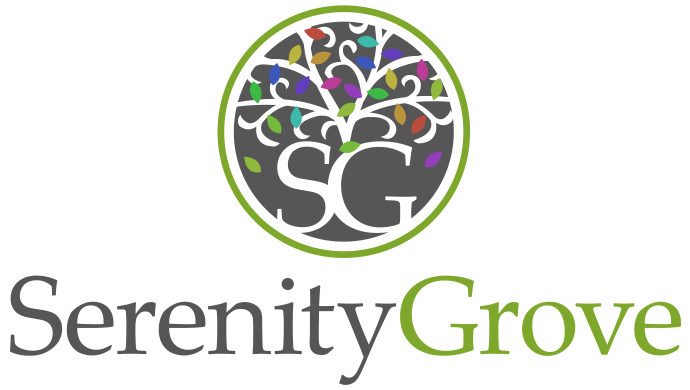Opiates cause tremendous damage to the lives of those who become addicted to them. Because so many people fall prey to this particularly challenging addiction, many treatment programs offer professional opiate detox centers.
Serenity Grove employs a staff of substance abuse experts who understand the power of an opiate addiction. We provide structured care that begins with detox and allows the individual to transition into residential or outpatient care to continue staying on the path of living a substance-free life.
Getting off opiates for good takes time and the assistance of experts in treating substance use disorders. Let Serenity Grove guide you through our program and hit the reset button on your life. Visit our admissions page today to start your recovery.
Opiate Withdrawal Symptoms
One reason people feel hesitant to begin treatment at opiate detox centers is because they fear the withdrawal symptoms. While they can be quite challenging, medications and emotional support can be provided to help ease them. Common opiate withdrawal symptoms include:
- Chills
- Shaking
- Nausea
- High blood pressure
- Sweating
- Vomiting
- Diarrhea
- Cravings for opiates
- Body aches and pains
- Fever
- Depression
- Anxiety
Recommended: Opiate Cravings: How to Deal With Them
How Long Does Opiate Withdrawal Take?
While not everyone experiences the exact same amount of time in detox, there is a commonality of it taking approximately a week. How long withdrawal lasts depends on the length and severity of the person’s addiction and how much professional support they receive while detoxing.
Recommended: How Long Does Painkiller Withdrawal Last?
Opiate Detox and Timeline
Your timeline may vary, but most people experience the following during drug detox:
- Day 1: Withdrawal symptoms surface within several hours of last using opiates. They can include diarrhea, shaking, drug cravings, and anxiety.
- Day 2-3: The initial symptoms increase and others begin to occur. They include nausea, vomiting, moodiness, and body aches and pains.
- Day 4-7: Symptoms peak around day four and then reduce in severity. After about a week, the ones that tend to remain include cravings for opiates, anxiety, and depression.
What to Expect During Opiate Detox
When a person first arrives at an opiate detox center, they will receive an assessment by an admissions counselor. This helps establish how long the opiate addiction has been going on, how often the person uses the drug, and how big the typical dosage is. This allows the treatment team to prepare the right detox program for the individual’s specific needs.
The person will be made comfortable in a relaxing setting and told what they can expect throughout the detox process. Going through detox causes both emotional and physical distress.
For this reason, a professionally trained detox team will stand prepared to offer as much relief for these symptoms as possible. This includes medications to help ease symptoms of both a physical and emotional nature. As well, they provide psychological support through different types of therapy offered in the facility.
Before finishing our detox program, a conversation will be held with the patient to determine what next level of treatment is ideal for them. Many people need the continued focus of residential care and stay in a 24/7 care unit. Others move to an outpatient program which allows them to travel to a facility for treatment but return to living in their homes.
Benefits of Opiate Detox
Attending opiate detox centers provides a host of benefits for people ready to conquer their substance use disorders.
Detoxing at home by themselves is an inherently dangerous plan. Staying in a detox center helps keep the person safe both medically and psychologically. The staff monitors each person to determine which withdrawal symptoms they experience. They can quickly provide medications to help ease the symptoms so that no one suffers needlessly.
Another benefit of a professional program is the variety of therapy modalities offered. Each type of therapy a person attends is designed to help them come to terms with the reasons they began abusing opiates. They can then work to resolve conflicts from the past and handle ongoing ones. This process helps them learn healthy coping skills that they can employ to avoid the temptation to relapse.
Drugs Used to Detox From Opiates
Opiate detox centers that understand how to ease a person’s withdrawal symptoms can choose from a variety of drugs to help during detox. These are FDA-approved medications used specifically for opiate addiction, also called opioid use disorder (OUD).
They include the following medications:
- Methadone: This helps reduce cravings for the drug and other withdrawal symptoms.
- Buprenorphine: Buprenorphine helps reduce cravings for opiates. Buprenorphine is available as an injection called Sublocade.
- Naltrexone: Naltrexone blocks the opioid receptors in the brain, which disrupts the effects of opioids. It is also available as a brand-name injection called Vivitrol.
In addition, some psychiatric medications, like Clonidine, help reduce body aches and pains, anxiety, and other symptoms during detox.
Begin Treatment at Opiate Detox Centers Today
Are you in need of treatment from a quality opiate detox center to help you get healthy in mind and body again? Serenity Grove offers high-quality care that changes your life.
We provide medical supervision to ensure you stay safe as you detox and become adjusted to living without the fog of opiate drugs. Our therapies target the needs of those getting off drugs and help you learn to avoid triggers to relapse. We also offer prescription medications to minimize withdrawal symptoms.
Contact us today and get started on living a drug-free life. With our help, you can make a big change in your life and get on the path to healing.

